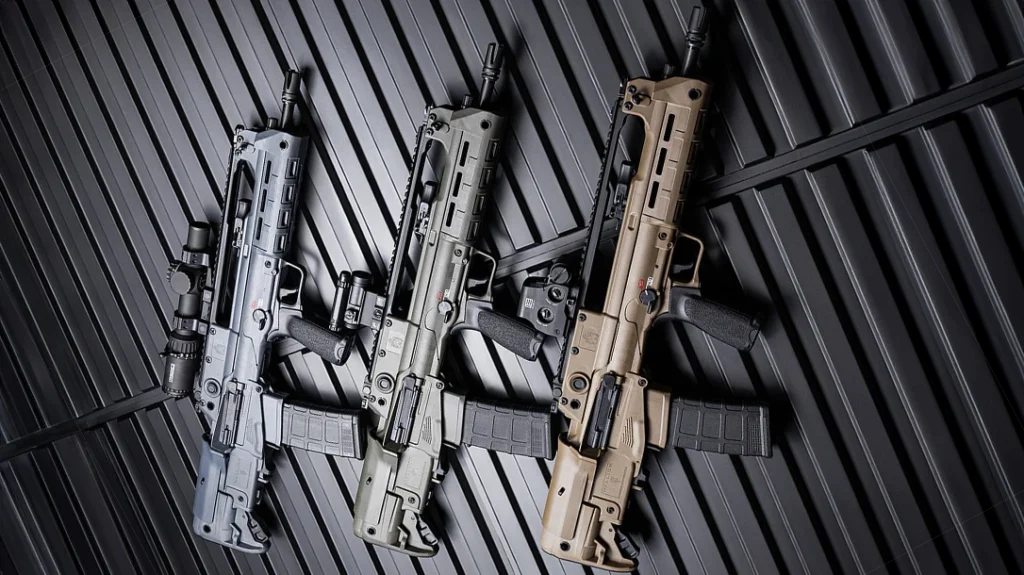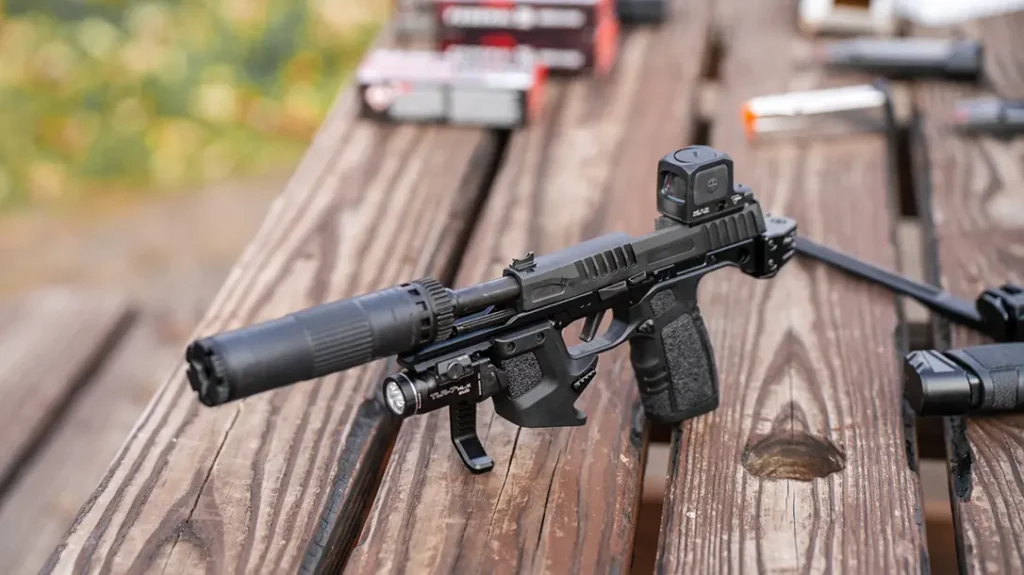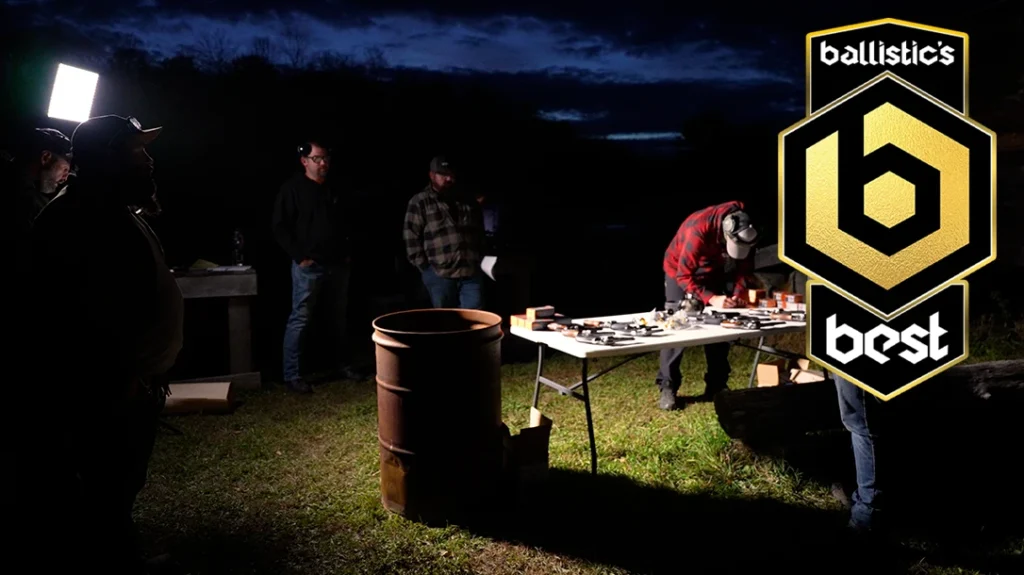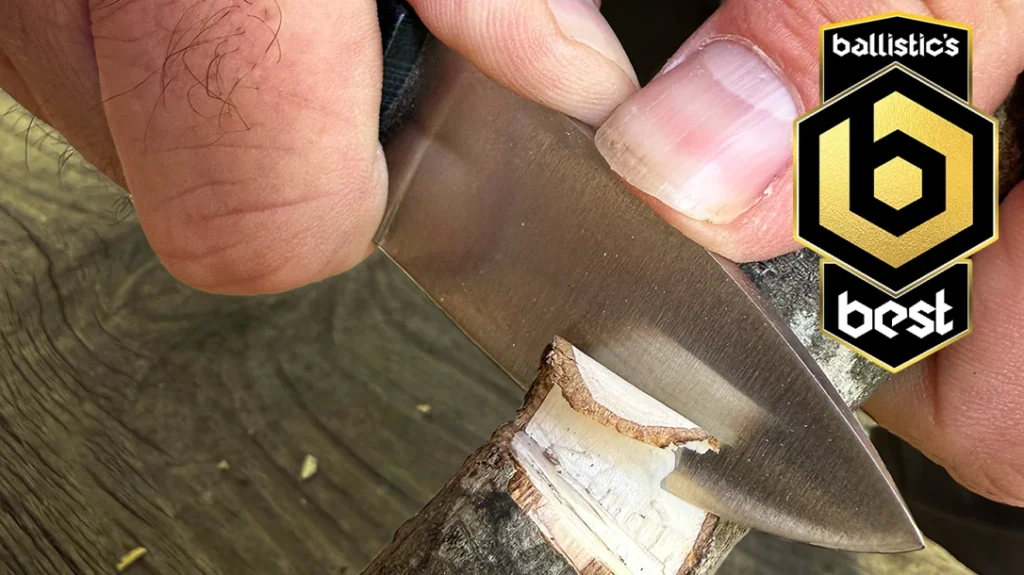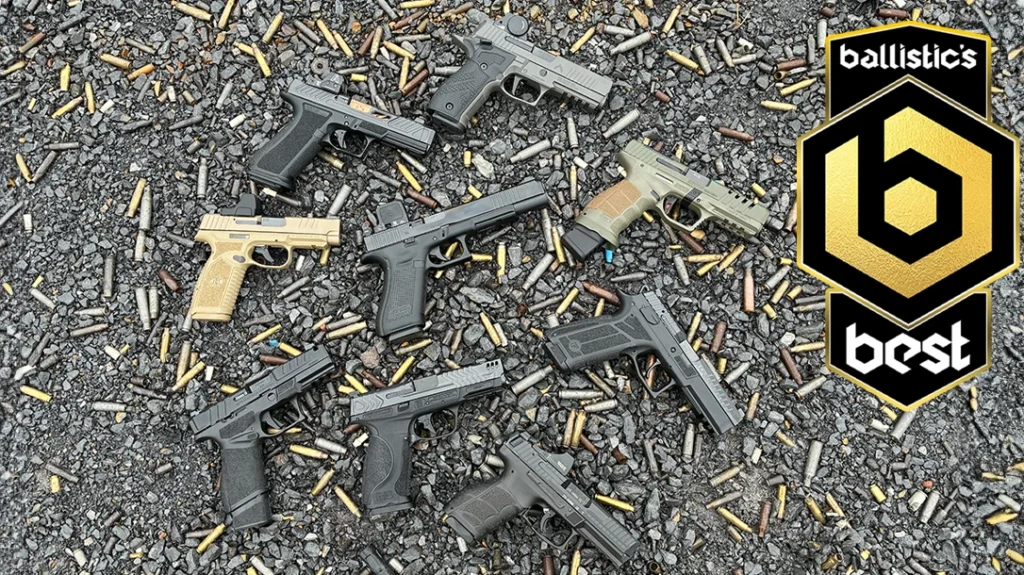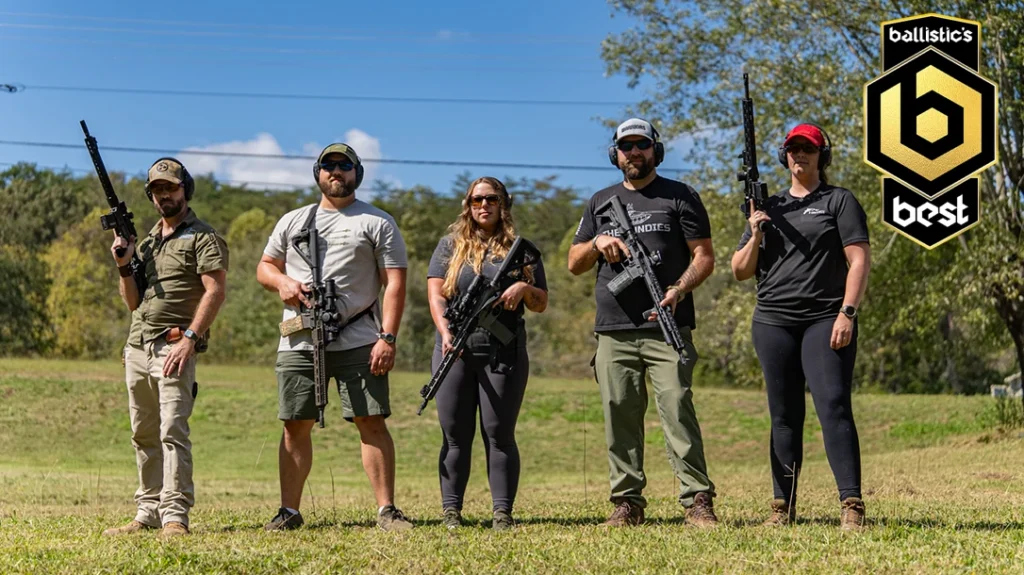What comes to mind when you think of Spain? Half the world along with most of America seems to speak their language nowadays. It would suck to be a bull there, and their primary export some 500 years ago seemed to be bloodthirsty, megalomaniacal conquistadors. What doesn’t exactly scream “Spain” is cutting edge Infantry weapons. And then there was the CETME.
The Spanish CETME
CETME stands for Centro de Estudios Técnicos de Materiales Especiales. Designed in the immediate aftermath of World War 2 and first adopted by the Spanish Army in 1957, this groundbreaking battle rifle had a most fascinating origin story. A radical departure from conventional small arms dogma of the era, the CETME was a child of war.
In the Beginning…
Most of the combatant nations started World War 2 with fairly antiquated small arms. At the time, our semi-automatic M1 Garand was the sole general-issue autoloading service rifle in the world. However, once things seriously conflagrated, a sense of desperation ensued.
Advertisement — Continue Reading Below
In fairly short order it became obvious that by declaring war on half the planet the Germans had bitten off way more than they could chew. Now overextended and inexorably losing the fight, German engineers strained to develop cutting-edge armaments. A fair amount of that effort was devoted to small arms.
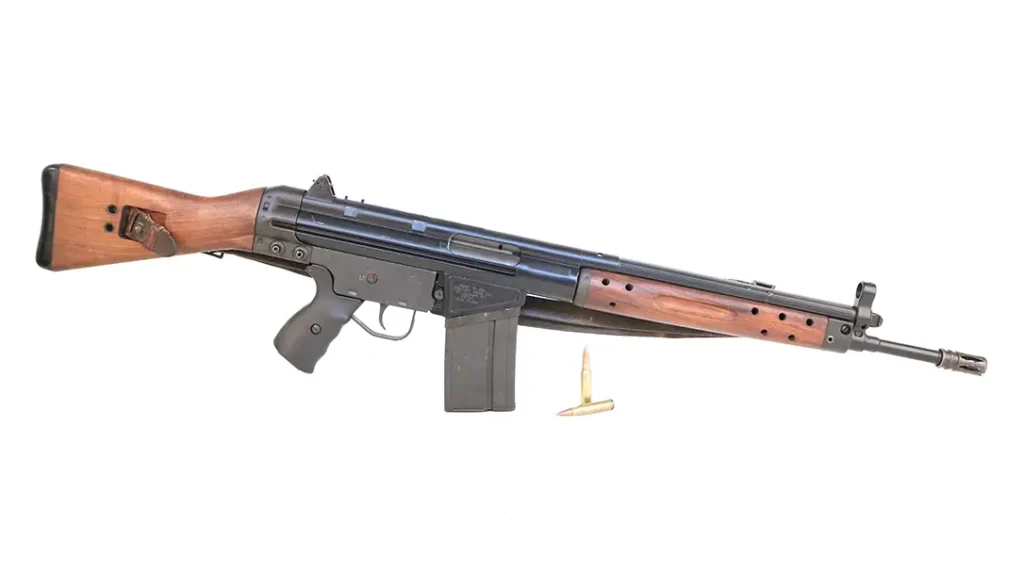
The CETME had its origins with the MG42 general purpose machinegun. The previous MG34 was mechanically gorgeous, but it was a beast to build and did not fare well in the rough, dusty spaces where the Wehrmacht operated. The answer was the thoroughly modern MG42.
Advertisement — Continue Reading Below
The guys who designed and built the MG42 had never before built a gun. That allowed them to approach the problem without a lot of preconceived bias. That fresh take ultimately resulted in what was arguably the most successful belt-fed general purpose machinegun ever produced. The stamped steel MG42 soldiers on in the guise of the MG3 even today.
The beating heart of the MG42 was its roller-locked, delayed-blowback action. Simple to make and forgiving of both fouling and ill attention, this basic mechanism was intended to help save the Third Reich from itself. Alas, evil of such profound magnitude eventually imploded under the weight of its own institutional depravity. However, not before those same salient mechanical attributes that made the MG42 so awesome found their way into shoulder-fired weapons as well.
Mechanical Evolution
The German MP40 9mm submachine gun was the first general-issue infantry weapon made predominantly from industrial stampings and without wooden furniture. From there was birthed the truly revolutionary MP43 that begat the MP44 that begat the StG44. All three of these radically-advanced rifles were essentially the same gun save the markings on the side.
Advertisement — Continue Reading Below
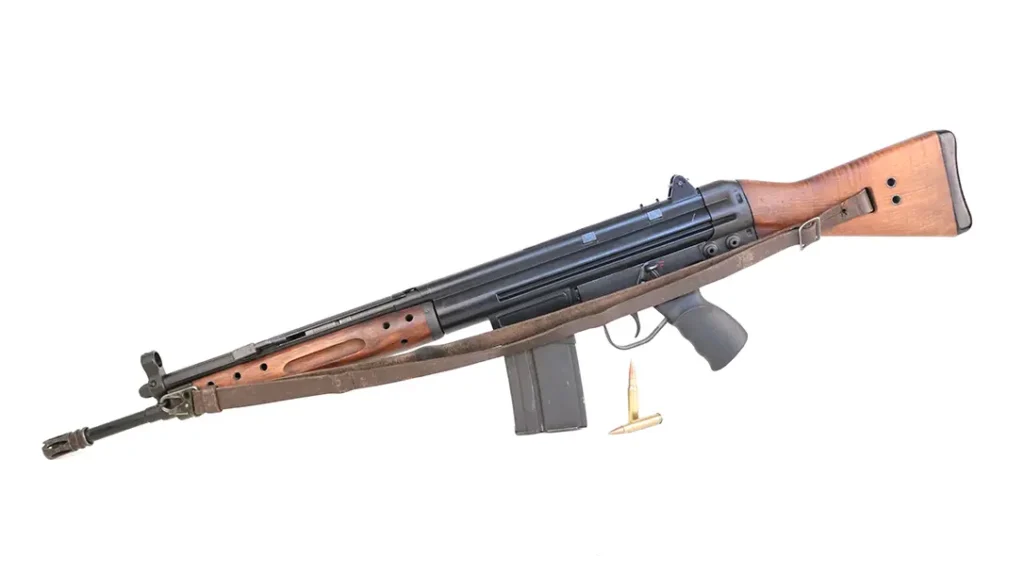
The StG44 was gas operated and proved the feasibility of mass manufacturing infantry weapons using stamped steel. At the very end of the war, Mauser engineers had adapted the roller-locked action of the MG42 to fire the 7.92x33mm kurz intermediate cartridge of the StG44. This revolutionary new rifle was designated the StG45. However, it arrived too late to see combat action.
With their country in ruins, a small group of German engineers led by Ludwig Vorgrimler gathered up what plans they could find for the prototype StG45 and made their way to Spain. Their hope was to escape the poverty, destruction, and deprivation that then characterized their war-ravaged homeland. Once established in Spain, they set about modernizing the StG45 design yet further.
Advertisement — Continue Reading Below
Battlefield Reliability
Unlike the MG42, the resulting CETME battle rifle had a fixed barrel. Such a design was simple to make, but resulted in a series of nagging failures to cycle. The solution to that quandary was to cut flutes in the inside of the chamber. This rendered the cartridges a bit more slippery. Empty cases fired by the CETME sport distinctive longitudinal fouling as a result. The end result was a shockingly reliable battle rifle.
Those first CETMEs fired a proprietary 7.92x41mm round. Subsequent versions utilized a reduced-power Spanish version of the 7.62x51mm. Before the CETME was ready for prime time, it would obviously have to be cleared to use standard 7.62x51mm NATO ammunition.
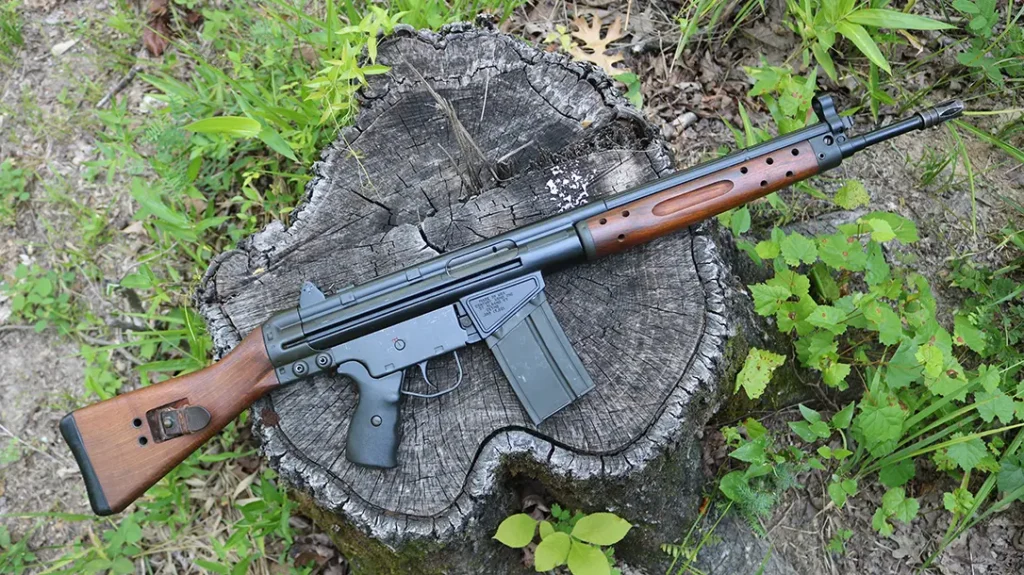
Advertisement — Continue Reading Below
That CETME’s 7.92x41mm round was itself fascinating. Originally introduced in 1953, it incorporated a long, thin 105-grain bullet that offered superlative long-range performance. The projectile itself consisted of a curious aluminum core nestled within a copper jacket. The production process left exposed aluminum at both the base and the tip. This early intermediate round offered roughly the same long-range performance as the 7.62x51mm NATO at a substantially lower weight.
Heading Home
In mid-1950’s, the Germans were still recovering from the wanton destruction of WW2. As they rebuilt the Bundeswehr into a proper defensive army designed to deter the Russians, they needed a new infantry weapon. In December of 1956, the German military purchased 400 Spanish CETME rifles for evaluation. You recall this was originally a German design anyway. These examples were chambered for that unique intentionally underpowered Spanish 7.62x51mm round.
Heckler and Koch was a pretty shoestring outfit at the time. Birthed from the ashes of the war, HK kept the doors open making bicycle parts and industrial machine gauges. HK engineers redesigned the CETME using higher quality steels and produced a gun that thrived with standard pressure 7.62x51mm NATO rounds. They further tweaked the furniture, rear sight, and a few other minor trinkets to produce the G3.
Advertisement — Continue Reading Below
The German Army enthusiastically adopted the roller-locked G3, using it throughout the Cold War until it was replaced with the thoroughly-modern polymer-framed G36. The gun was also widely exported around the world. It served as a foundation for the subsequent HK33 in 5.56x45mm, as well as the expansive MP5 family of 9mm submachine guns.
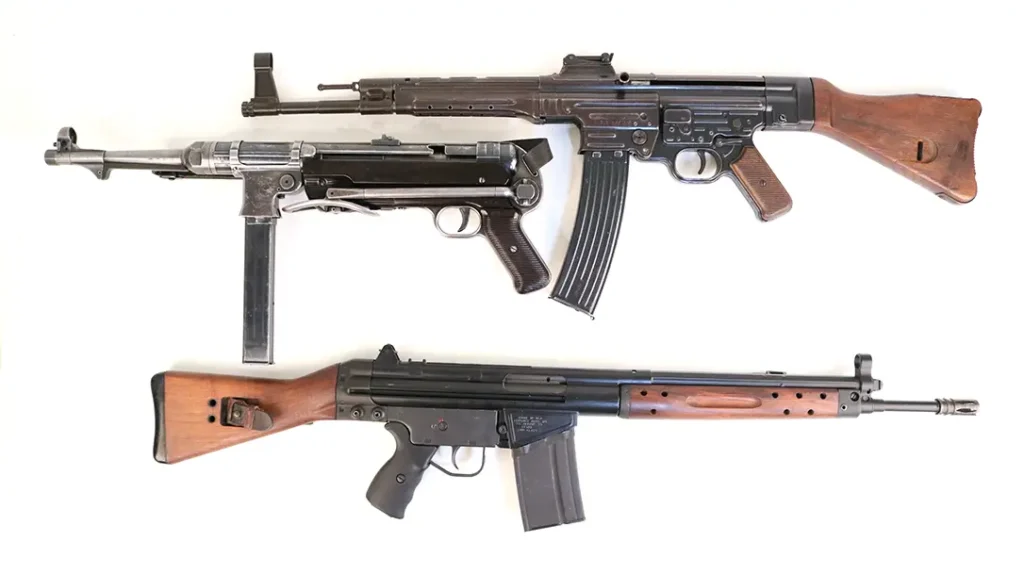
Details
The CETME pioneered the modular design that has since become so common with German roller-locked weapons. The non-reciprocating charging handle is oriented on the front left of the chassis where it is easily accessed by right-handed shooters. The 15% or so of the population cursed with left-handedness is just screwed. The furniture is cut from a fairly utilitarian European wood, and the 20-round box magazine must be rocked back slightly when inserted to ensure positive lockup.
Advertisement — Continue Reading Below
The GI gun is held together via three non-captive push pins just like the subsequent military-issue G3–two in the back and one in front. Unlike the subsequent HK offerings, the forearm is secured with a machine screw rather than a pin. Punching these three pins out allows the operator to remove the buttstock and fire control unit.
Original military versions of the rifle offered three-position, full-auto fire controls. Interestingly, the CETME fire control unit works in reverse of that of the HK guns. Up is fire, while down is safe.
The sights represent a substantial departure from the familiar rotating diopter version found on subsequent German guns. The unit includes a flip-adjustable, four-position rear sight protected by stamped steel ears. The front sight is a simple fixed post with a fully enclosed protective hood.
Advertisement — Continue Reading Below
The flash suppressor is very similar to that of the G3. It includes the expected slots as well as a wire-cutting groove on its face. To cut wire you settle the wire in the groove, lean forward to ensure it is under tension, and fire a round. This feature carried over into all German G3 and HK33 weapons.
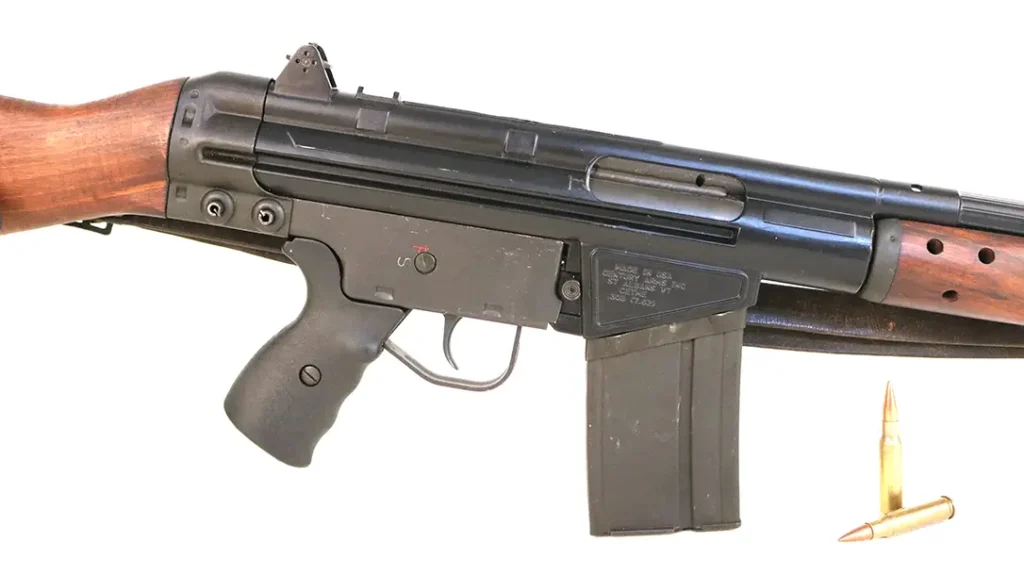
Range Impressions
Like the G3 that spawned from it, the CETME is a fairly heavy, manly weapon. The roller-locked action is inimitably reliable, but the rifle does jump around a bit, particularly when fired rapidly. The mass of the gun means that recoil is not necessarily unpleasant, but it is noteworthy.
The CETME action lends itself to decent combat accuracy, though the trigger is fairly long and mushy. That of the G3 exhibits a similar personality. This was by design. While subsequent precision rifle versions of the G3 sported lightweight target triggers, that of the standard CETME and G3 struck a balance between effectiveness, reliability, and safety.
The bolt on the CETME does not lock back on the last round fired. That means the operator must secure the bolt to the rear manually, strip out the empty magazine, replace it with a fresh one, and slap the bolt handle down to chamber a round. This process can seem a bit tedious, particularly under pressure, but it does look undeniably cool.
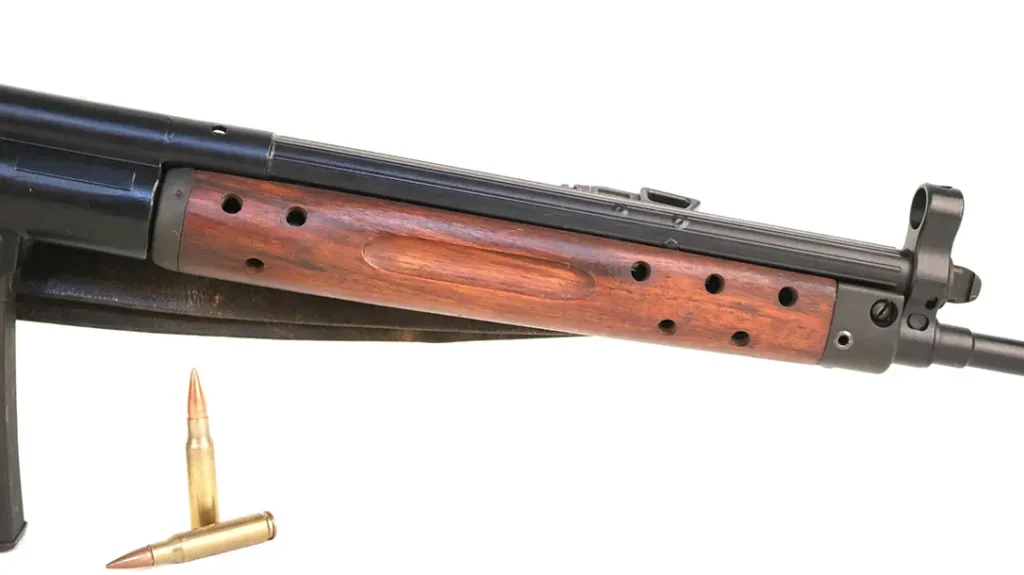
Ruminations
The CETME was itself a stepping stone to greater things. Century Arms built up thousands of Spanish-surplus CETME parts kits on domestically-produced receivers and sold them on the American civilian market. The CETME never did command quite the same lofty prices as its German progeny, but it is an historically-significant firearm nonetheless. Big, powerful, rugged, and cool, the CETME is a fascinating legacy of the Cold War.
Spanish CETME Specs
- ActionL Roller-Locked, Direct Blowback
- Caliber: 7.62x51mm
- Barrel: 17.7 in
- Overall Length: 40 inches
- Weight: 9.9 pounds
- Sights: Flip Rear Aperture/Front Post
- Cyclic Rate: 600 rpm
Spanish CETME Performance
| Load | Group Size | Velocity |
| Cavim 147-grain FMJ | 3.8 inches | 2,676 fps |


